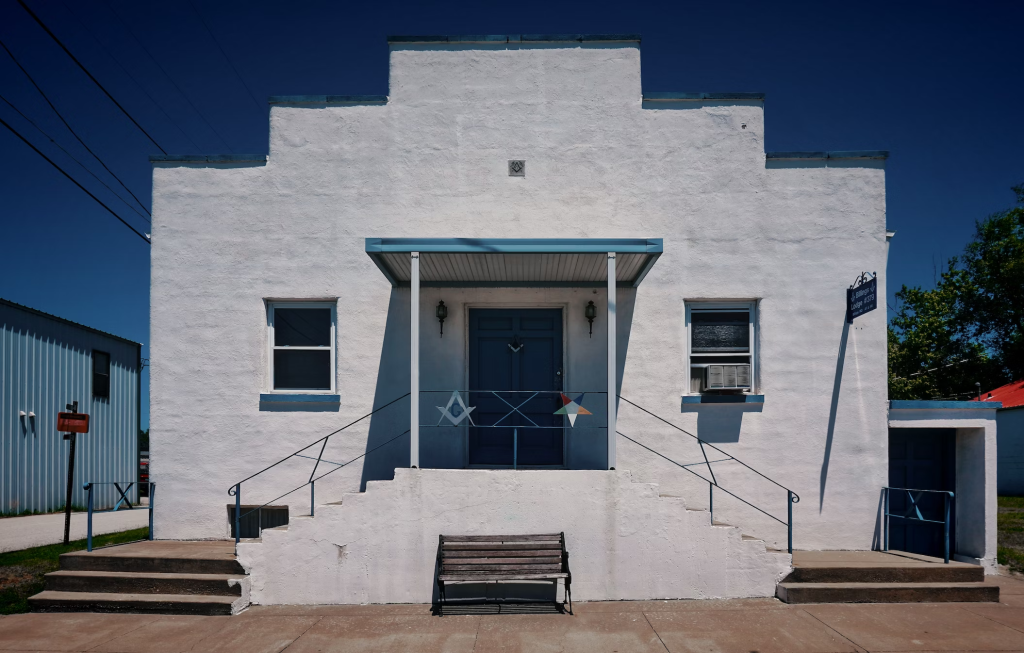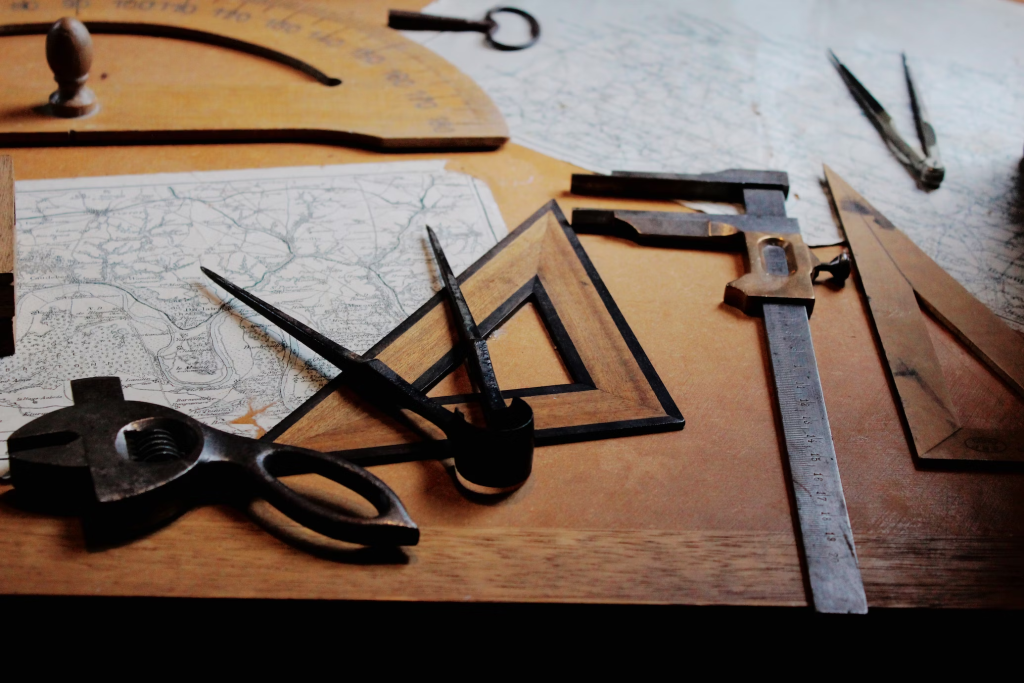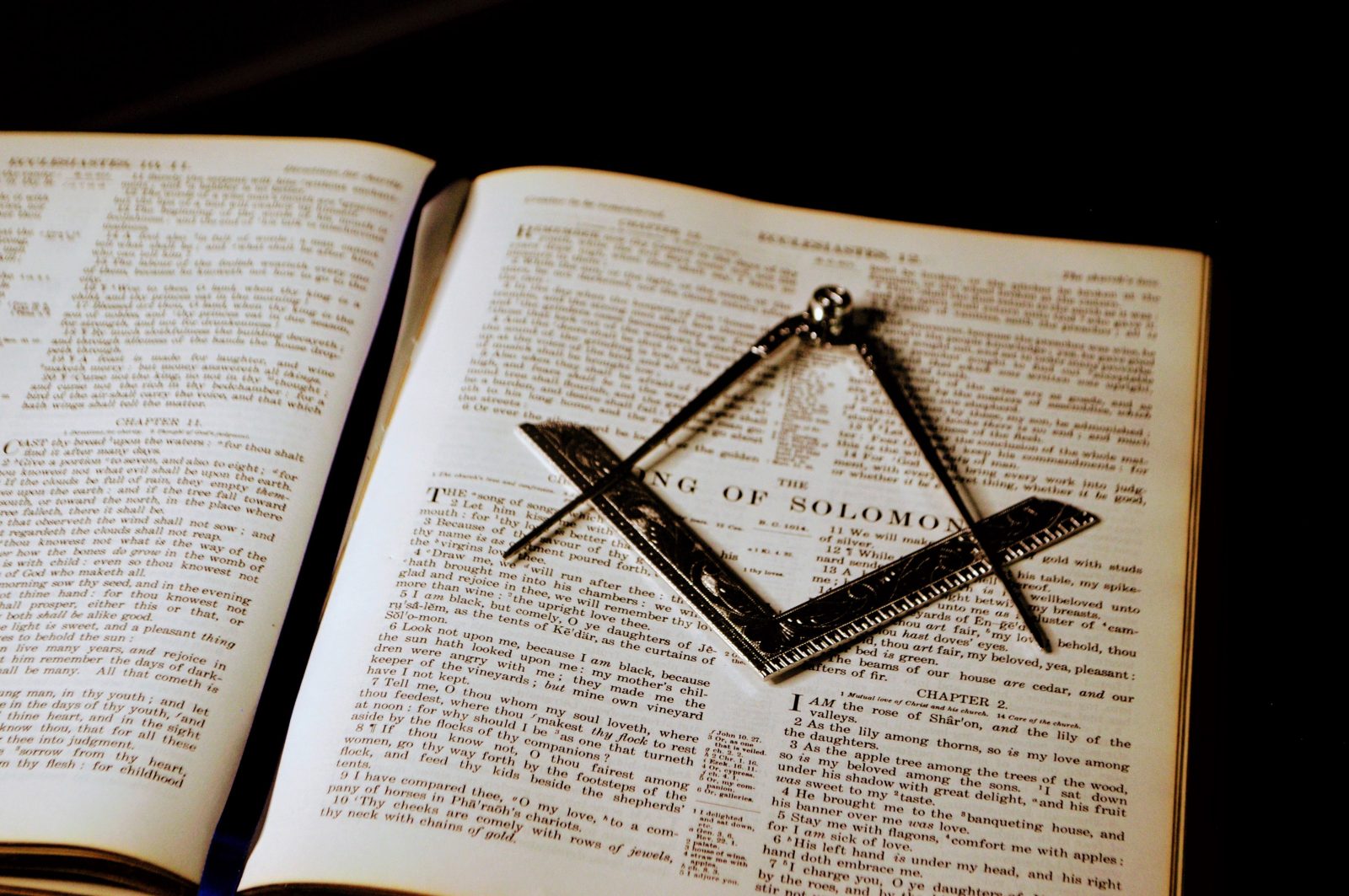We are accustomed to seeing the square and compass emblem as symbols of Masons. This Masonic emblem is permanently engraved in our memory, whether we recognize it when passing a Masonic structure or seeing someone wearing a masonic ring. Without a doubt, the square and compass is the most recognizable symbol of Freemasonry.
What Is the Square & Compass?

Square and Compasses (or, more precisely, a square and a pair of connected compasses) is the most famous symbol of Freemasonry. The square and compasses are both tools of the architect and are employed in Masonic ceremonies as symbols to convey meaning.
These symbols are explained as lessons in behavior in some Lodges and rites. Due to the non-dogmatic nature of Freemasonry, there is no universally accepted meaning for these symbols (or any other Masonic sign) that is applied by Freemasonry as a whole.
The Origin of Square & Compass
The precise origin of the square and compass symbol is unknown. The stonemasons’ guilds in the medieval ages are said to have been the symbol’s original source. In fact, Freemasonry uses a lot of terminology and symbolism that dates to that time.
The square and compass emblem with the letter G in the middle, which is present on many buildings throughout the world, immediately identifies a structure as a Masonic entity. Although the origins of this Freemasonry logo may be traced back to the 1780s, its first documented use outside of a Masonic setting dates back to a book that was published in the early sixteenth century. Most Masonic academics disagree that this artifact has any significance for Freemasonry, nevertheless.
The idea of “keeping within compass” derives from an old poem that goes, “By honest and industrious means, we live a life of ease, then let the Compass be your guide and go wherever you please.” This is where the compass in the square and compasses come from. The term and concept were well known in the 1700s, and many items, including teapots, plates, and engravings, used this symbolism as ornamentation without having any association with Freemasonry. The phrase “keeping within compass” signified that you were moving in the right direction and acting appropriately. This topic was quickly adopted by the fraternity and has since served as the foundation for the modern standardization of Masonic beliefs.
The Profound Symbolism of Square and Compass

The Square: Symbol of Truth and Fariness
The square, also known as a builder’s square, is made out of two fixed, equally spaced flat-edged metal or wooden arms that make a perfect “right angle” (or 90-degree angle). The ability to sketch and carve precisely square corners makes this equipment essential for stonemasonry. Buildings must have absolutely square corners to prevent leaning and to ensure that they are sturdy and sound structural. This emblem is utilized in Freemasonry to impart moral precepts. Being “square” in your behavior is seen to imply being truthful and just.
The Compass: Symbol of Moderation and Self-control
The majority of individuals most likely remember using compasses in geometry class. This device has two equal-length legs that are joined at the apex by an adjustable hinge. It is used to create flawless circles and arcs in geometry, which is a fundamental part of architectural planning. The compasses represent self-control in speculative Masonry and the capacity of man to control his desires in order to lead a balanced existence.
The compasses are used symbolically in the teachings of Freemasonry to delineate our wants in order to prevent excessive indulgence and uphold moderation, which is the cornerstone of morality and wisdom. Together, the square and compasses can operate as a reminder that living an honest life requires balancing one’s demands with those of others.
Wide Application of Square and Compass
As the famous Masonic symbol, you can definitely see it when you pass by a masonic building. With the organization becoming bigger and bigger, square and compass are applied in many fields.
- In Fashion Jewelry:
It is quite common for us to see someone wearing a piece of masonic jewelry. The jewelry could be a pendant or a bracelet, but the most common is the masonic ring. Men used to wear personalized signet rings to serve as seals on formal papers centuries ago. These “gentleman’s rings” were used to confirm authenticity by pressing wax on envelopes as a seal. Even though they are no longer for making seals in masonic traditions, the unique masonic rings are nevertheless a symbol of the lodge, the member’s rank, and associations.
Besides the identification, masonic jewelry is quite a fashion accessory to enhance your outfit. The square and compass design gives the jewel geometric aesthetics and can be suited for any outfit.
- In Clothes:
There are many masonic clothes that use the square and compass symbols. Usually, it’s printed on the left side of the T-shirts or any top clothes. Additionally, cuff links, tie pins, and ties can also find these symbols. Square and compass aprons are quite popular among Freemasons.
Besides the two fields, you can also see the symbol on the mug and even the car. People are free to print it on anything they want.
In summary
In conclusion, the Square and Compasses have always been an essential part of the Masonic tradition. They serve to act as a reminder to all Masons of the significance of these ideals in their daily lives. They reflect the principles of Freemasonry, including morality, honesty, integrity, and fraternity.
The square and compasses also represent the pursuit of knowledge, wisdom, and personal development. This explains why the square and compasses have such a significant symbolic meaning in Masonry. In fact, whether you are a Freemason or not, we need to preserve these symbols, honor their significance, and uphold the ideals they stand for.
Georgia
Georgia is passionate about the realms of fashion, jewelry, and lifestyle.Her love for these topics has shaped her writing career. She is committed to creating engaging and informative content that resonates with readers from all walks of life. Together, embark on an inspiring adventure!
Recent Posts
A Guide to How to Train Your Dragon Species
06/24/2025How to Style Baggy Jeans
06/17/2025Grunge Aesthetic: A Style Revolution
06/03/2025Categories
Related Articles
A Guide to How to Train Your Dragon Species
Welcome, fellow dragon enthusiasts and aspiring Viking trainers! Have you ever wondered...
ByAlicia06/24/2025Grunge Aesthetic: A Style Revolution
The world of fashion is a cyclical beast, constantly re-inventing and re-interpreting...
ByAlicia06/03/2025What Is Health Goth
In 2024, “Health Goth” which is hot in 2010s gets back from...
ByAlicia05/27/2025A Beginner’s Guide to Trad Goth: Music, Fashion, and Etiquette
By Bonnie Blackthorn – Vintage Fishnet Addict & Batcave Survivor Hey there,...
ByAlicia03/04/2025














Leave a comment